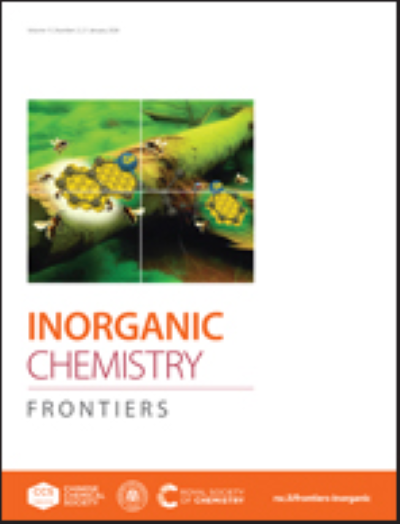Vanadates inhibit non-small cell lung cancer through modulation of ferroptosis mediated by the CBS-CPS1 axis
IF 6.1
1区 化学
Q1 CHEMISTRY, INORGANIC & NUCLEAR
引用次数: 0
Abstract
Lung cancer remains the leading cause of cancer mortality, where intrinsic and acquired resistance to cisplatin-based chemotherapy constitutes a major therapeutic challenge in non-small cell lung cancer (NSCLC). Previous studies suggested that vanadium might represent a promising platinum-alternative therapeutic strategy for NSCLC through a unique chemical reaction pattern, though the regulatory networks remain incompletely characterized. Integrated pharmacological screening with cell death pathway inhibitors and transcriptomic profiling revealed that vanadium compounds suppress NSCLC progression by triggering ferroptosis, a process governed by cystathionine β-synthetase (CBS)-mediated regulatory mechanisms. CBS knockdown promoted intracellular Fe2+ accumulation, elevated lipid ROS levels, and increased MDA content, ultimately leading to the inhibition of cell growth and proliferation both in vitro and in vivo. Conversely, ICP-MS analysis revealed that CBS overexpression substantially decreased cellular iron uptake. The CBS-specific inhibitor AOAA demonstrated potent synergistic effects with vanadates in suppressing NSCLC cell growth. Furthermore, CoIP-MS identified CPS1 as a potential direct interacting protein of CBS. Remarkably, CPS1 complementation in shCBS NSCLC cells attenuated the key indicators of ferroptosis while restoring cell growth and proliferation. Collectively, our study systematically elucidated the underlying mechanisms by which vanadates inhibit NSCLC progression and defined the functional significance of the CBS-CPS1 axis, providing novel therapeutic insights for advancing vanadium-based metallodrugs in clinical oncology.

钒酸盐通过调节CBS-CPS1轴介导的铁凋亡抑制非小细胞肺癌
肺癌仍然是癌症死亡的主要原因,其中对顺铂化疗的内在和获得性耐药构成了非小细胞肺癌(NSCLC)的主要治疗挑战。先前的研究表明,钒可能通过一种独特的化学反应模式代表了一种有希望的非小细胞肺癌铂替代治疗策略,尽管其调控网络尚未完全表征。结合细胞死亡途径抑制剂的综合药理学筛选和转录组学分析显示,钒化合物通过触发铁凋亡来抑制NSCLC的进展,这一过程由胱硫氨酸β-合成酶(CBS)介导的调节机制控制。CBS敲低促进细胞内Fe2+积累,提高脂质ROS水平,增加MDA含量,最终导致体外和体内细胞生长和增殖受到抑制。相反,ICP-MS分析显示,CBS过表达显著降低了细胞铁摄取。cbs特异性抑制剂AOAA与钒酸盐在抑制非小细胞肺癌细胞生长方面显示出强大的协同效应。此外,CoIP-MS鉴定CPS1是CBS潜在的直接相互作用蛋白。值得注意的是,shCBS NSCLC细胞中的CPS1补体在恢复细胞生长和增殖的同时,减弱了铁凋亡的关键指标。总的来说,我们的研究系统地阐明了钒酸盐抑制NSCLC进展的潜在机制,并确定了CBS-CPS1轴的功能意义,为推进钒基金属药物在临床肿瘤学中的应用提供了新的治疗见解。
本文章由计算机程序翻译,如有差异,请以英文原文为准。
求助全文
约1分钟内获得全文
求助全文
来源期刊

Inorganic Chemistry Frontiers
CHEMISTRY, INORGANIC & NUCLEAR-
CiteScore
10.40
自引率
7.10%
发文量
587
审稿时长
1.2 months
期刊介绍:
The international, high quality journal for interdisciplinary research between inorganic chemistry and related subjects
 求助内容:
求助内容: 应助结果提醒方式:
应助结果提醒方式:


